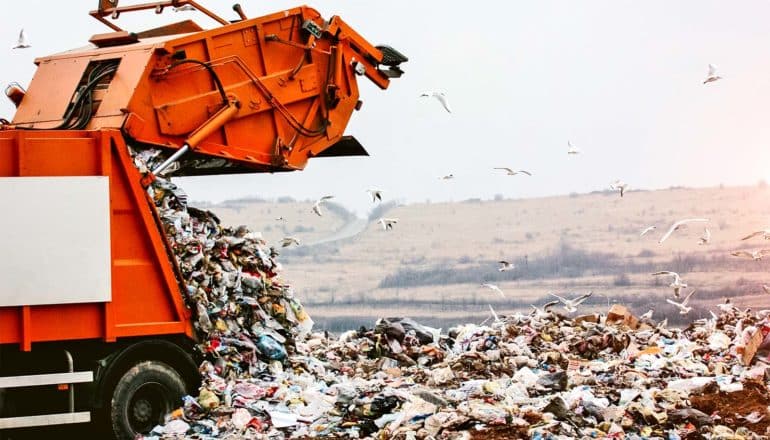
Synthetic compounds called “siloxanes” from everyday products like shampoo and motor oil are finding their way into landfills and supercharging the biogas those landfills produce, researchers report.
While it’s a problem today, the researchers say it could be an opportunity to get more energy out of landfill gas.
The compounds efficiently conduct heat and interact with water, and as such their popularity has increased in a variety of consumer products. That means more and more siloxanes are headed to your local landfill.
Biogas refers to fuel gases that are synthesized from different biological or organic feedstocks like landfill gas and wastewater treatment plants. In recent years, it has become clear that siloxanes have been damaging the power-generating equipment that’s fueled with landfill gas. But the researchers say it may be possible to harness the siloxanes to produce more energy.
‘Like rocket fuel’
The researchers conducted the first chemical analysis of how siloxanes affect biogas. They found that siloxanes increase the reactivity of biogas, leading to faster ignition in engines and the release of more energy. But the siloxanes in the biogas can damage those engines—typically power-generating gas turbines and reciprocating piston engines.
“Siloxanes are highly ignitable,” says Margaret Wooldridge, professor of mechanical engineering and director of the Dow Sustainability Fellows Program at the University of Michigan. “They change the chemistry of biogas like crazy. The stuff is like rocket fuel, literally—crazy-reactive.”
The siloxanes essentially change the biogas’s “flame speed,” which is a measure of how quickly a fuel combusts and drives a turbine or piston.
Biogas is composed mainly of methane. There’s methane gas in nature but it’s also produced when organic material decomposes in landfills, along with hydrogen, carbon monoxide, and other hydrocarbons. Methane is the main component of natural gas and biogas, making both valuable sources of fuel and energy that are cleaner than coal.
In the atmosphere, however, methane is particularly good at trapping heat, adding to our global warming problem. In particular, methane is 30 times more effective a greenhouse gas than CO2. And according to the EPA, municipal solid waste landfills account for 14% of all human-related methane emissions in the US each year—the third-largest source behind the gas and petroleum industry and agriculture.
That property has spurred efforts to capture methane from landfills and use it as a fuel, instead of allowing it to escape unchecked.
Measuring ‘ignitability’
In this study, the researchers separately tested hydrogen and carbon monoxide mixtures containing two siloxanes—trimethylsilanol (TMSO) and hexamethyldisiloxane (HMDSO)—against hydrogen and carbon monoxide mixtures with no siloxanes.
Specifically, the researchers clocked how long it took for each mixture to ignite. Scientists consider fuels that have a shorter ignition delay more ignitable or reactive—and hydrogen is one of the most reactive fuels we use.
Hydrogen and carbon monoxide with TMSO produced ignition delay times that were 37% faster than the reference case. And HMDSO-infused methane produced delay times 50% faster.
Researchers hope their work sheds light on how siloxanes alter engine performance when used as a fuel.
“Trace concentrations of siloxanes have been a known problem in biogas applications—leading to the formation of abrasive silica deposits on engine components,” says study coauthor Rachel Schwind, a doctoral student. “For this reason, most prior research in this area has focused on how to remove them from the captured gas.”
The potential of siloxanes
Along with the problem siloxanes pose, there is also potential. Wooldridge says siloxanes could be key to deriving bolstered energy production from biogas.
“We would love to be able to harness them as an energy source,” she says.
Analyzing the combustion chemistry is a step in that direction.
“That would potentially negate the need for scrubbing or removal during biogas processing and reduce costs,” Schwind says. “If we can reduce those costs, it moves biogas closer to being a truly carbon neutral fuel. And if we can make landfill gas a more economically attractive option, landfill operators will have more incentive to capture and utilize this harmful greenhouse gas.”
The research appears in the journal Combustion and Flame.
The US Department of Energy’s Basic Energy Sciences program supported the research.
Source: University of Michigan
The post Supercharged trash gas could produce more green energy appeared first on Futurity.
from Futurity https://ift.tt/2XkFmhy
No comments:
Post a Comment